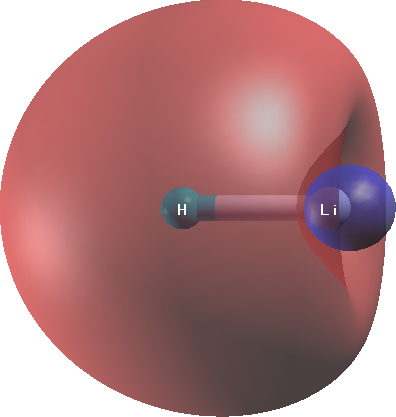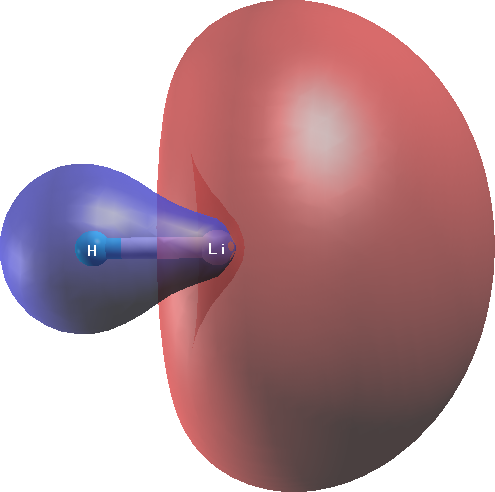NOTE: This is a work in progress.
ffr-LFDFT is an experimental package to solve electronic structure problems
based on density functional theory
(DFT)
and Kohn-Sham equations
using Lagrange basis functions.
This package is growing from my implementation of Prof. Arias' practical DFT mini-course. While plane wave is used as the basis set in that course, here Lagrange basis functions is used as the basis set in this package.
Presently, it can do total energy calculations via SCF and direct minimization. Force calculations and other types of calculatiosn are planned in the future.
ffr-LFDFT is mainly written in Fortran, so a Fortran compiler is required to build
the pakckage.
Currently it has been tested using the following compilers:
A C-99 compliant C compiler is also required to compile one external C source file (Faddeeva.c).
Recent version of gcc should be OK for this.
This repository includes selected SPARSKIT files. SPARSKIT is used for sparse-matrix vector
multiplication and ILU0 preconditioning. These files are written in FORTRAN77.
This repository also includes
slightly modified bspline-fortran.
Recent version of gfortran is required to compile this file.
Several numerical libraries are also required:
- BLAS and LAPACK
- FFTW3
- LibXC
To build the program you need to change to directory src
cd src
Copy the appropriate make.inc file from directory platforms.
For example, you want to use gfortran:
# execute this command under directory src
cp ../platforms/make.inc.gfortran make.inc
You can modify the file make.inc to suit your needs.
Finally you can build the program:
make # build the library
make main # for main executable
make postproc # for post processing
Main executable is named ffr_LFDFT_<compiler_name>.x, for example ffr_LFDFT_gfortran.x
To use the main program, you need to prepare an input file.
The input file format is very similar to Quantum ESPRESSO's
pw.x input. There is no restriction to input file name, as long as it is a valid name.
The following is an example of input file for LiH molecule:
&CONTROL
pseudo_dir = '../../pseudopotentials/pade_gth'
etot_conv_thr = 1.0d-6
/
&SYSTEM
ibrav = 8
nat = 2
ntyp = 2
A = 8.46683536902
B = 8.46683536902
C = 8.46683536902
nr1 = 45
nr2 = 45
nr3 = 45
Nstates_extra_ = 1
/
&ELECTRONS
KS_Solve = 'SCF'
cg_beta = 'PR'
electron_maxstep = 150
mixing_beta = 0.5
diagonalization = 'LOBPCG'
startingwfc = 'random'
/
ATOMIC_SPECIES
Li 3.0 Li-q3.gth
H 1.0 H-q1.gth
ATOMIC_POSITIONS angstrom
H 3.48341768451073 4.23341768451073 4.23341768451073
Li 4.98341768451073 4.23341768451073 4.23341768451073
Because of its similarity with pw.x input, Xcrysden can be used to visualize the
input file. For example, if the filename of input file is
Different from pw.x of Quantum ESPRESSO, which by default read input file from
standard input (using redirection <), ffr-LFDFT reads the name of the input file from
its first argument. The output, however, is printed out to standard output.
The output can be redirected to a file by using >.
The following is a typical command to run the program:
ffr_LFDFT_gfortran.x INPUT > LOG
More examples can be found in work directory.
One post-processing program, with very limited capability, is also provided. Currently it only can produce 3D orbital in XSF format which can be visualize by several visualization programs.
ffr-LFDFT is written in Fortran using modular procedural programming paradigm.
I have tried to avoid to make the code simple enough to read and modify.
In some aspects, the programming style is similar to the one used in Elk code.
Several examples of using the subroutines are given in directory tests.
The following code is an example of how to initialize various types of
Lagrange basis functions (sinc, cluster, and periodic)
and the associated the grid points:
SUBROUTINE test_sinc()
IMPLICIT NONE
INTEGER :: NN(3)
REAL(8) :: hh(3)
NN = (/ 63, 63, 63 /)
hh = (/ 0.3d0, 0.3d0, 0.3d0 /)
CALL init_LF3d_sinc( NN, hh )
CALL info_LF3d()
CALL dealloc_LF3d()
END
SUBROUTINE test_cluster()
IMPLICIT NONE
INTEGER :: NN(3)
REAL(8) :: AA(3), BB(3)
NN = (/ 63, 63, 63 /)
AA = (/ 0.d0, 0.d0, 0.d0 /)
BB = (/ 16.d0, 16.d0, 16.d0 /)
CALL init_LF3d_c( NN, AA, BB )
CALL info_LF3d()
CALL dealloc_LF3d()
END
SUBROUTINE test_periodic()
IMPLICIT NONE
INTEGER :: NN(3)
REAL(8) :: AA(3), BB(3)
NN = (/ 63, 63, 63 /)
AA = (/ 0.d0, 0.d0, 0.d0 /)
BB = (/ 16.d0, 16.d0, 16.d0 /)
CALL init_LF3d_p( NN, AA, BB )
CALL info_LF3d()
CALL dealloc_LF3d()
END
PROGRAM ex_init
CALL test_periodic()
CALL test_cluster()
CALL test_sinc()
END PROGRAM-
Practical DFT mini-course. A good starting point for implementing a DFT code from scratch.
-
KSSOLV. A MATLAB Toolbox for Solving the Kohn-Sham Equations. Another good code for beginner.
-
ELK DFT package. Various mixing subroutines in SCF are adapted from this package.

